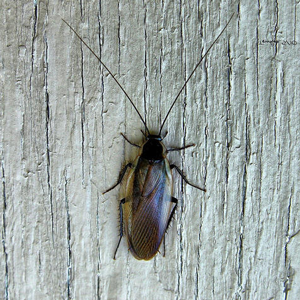6 Common Myths About Cockroaches
By Chris Williams on February 28, 2014.

The American Cockroach
1. Myth: White Cockroaches Are a Subspecies Produced When Populations Get Very Large
Fact: White cockroaches are not albinos or a subspecies, they are cockroaches that have recently molted or shed their skin. They remain soft and light-colored for several hours until their new skin hardens and gradually darkens. They usually remain hidden during this transition period.
2. Myth: Cockroaches Can Grow to Be 3 Inches Long
Fact: Yes, but not in the U.S. Some tropical cockroaches can be up to 3 inches long. Our biggest cockroach is the American cockroach at 1.5 inches. Cockroaches don’t continue to grow past their final molt. Once they become adults, they are as big as they will get.
3. Myth: A Cockroach Egg Case Contains 8-10 Baby Cockroaches
Fact: Actually it contains many more. The egg case of our most common cockroach, the German cockroach, holds about 36 embryos. Egg cases of the larger cockroaches, like the American cockroach, contain about 15 baby cockroaches.
4. Myth: Cockroaches Survive so Well Because They Don’t Have Any Natural Enemies.
Fact: Maybe not in your home (unless you have a cat), but in the wild, many animals (both large and small) feed on cockroaches, including toads, frogs, iguanas, lizards, birds, bats, and mice. Even other insects like beetles, centipedes, and spiders will feed on cockroaches.
5. Myth: Palmetto Bugs Are Beetles, Not Cockroaches
Fact: Floridians and other Southerners are in denial. Those large, flying insects that they call Palmetto bugs are still American cockroaches no matter what else they call them. We have American cockroaches in the Northeast, but they’re rarely seen and they rarely fly. They’re mostly tropical cockroaches.
6. Myth: Boric Acid Powder Is a Safe, Natural Way to Kill Cockroaches
Fact: Boric acid is an inorganic compound that can kill cockroaches when formulated for use as a pesticide. Pure boric acid powder purchased in the drugstore is not labeled for use as a pesticide. Many people use it irresponsibly by dusting it along kitchen counters or by mixing it with onion or sugar to make bait balls. Less than 2 teaspoons of pure boric acid can kill a child.
Photo credit: gb_packards / Foter / CC BY-ND